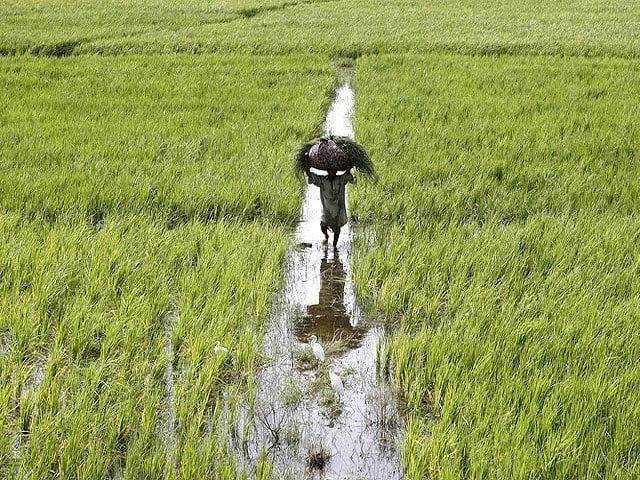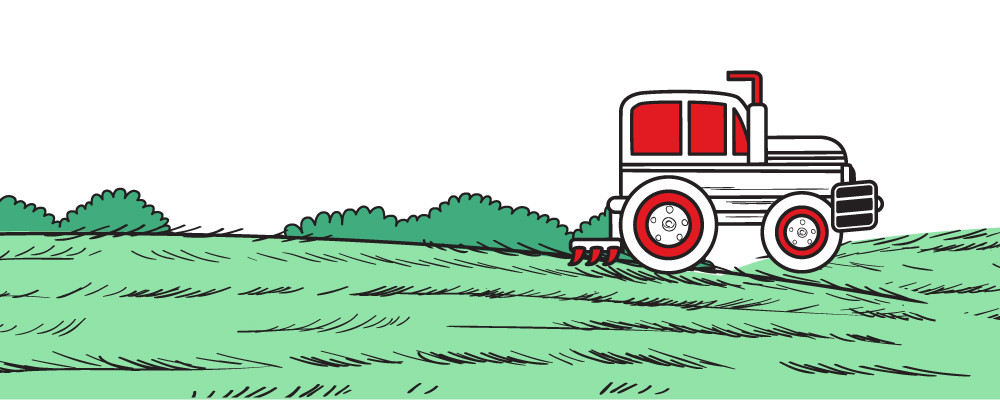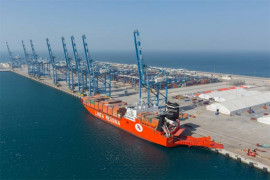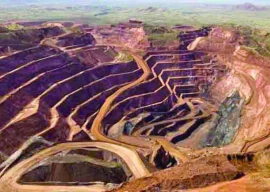
Pakistan’s agriculture sector had been in the limelight throughout calendar year 2023 but it did not make any significant improvement despite some supportive measures and relief packages announced by the government.
Battling with the aftermath of massive flooding in the monsoon of 2022, the agriculture sector, called the backbone of rural economy, somehow managed to achieve better production of a few crops. These included corn output of 10.8 million tons, cotton harvest of 8 million bales so far – a marked improvement over previous year, and the staple wheat crop of 27.634 million tons.
Despite the improvement in harvests of these key crops, the risk of food security still looms, as Pakistan’s food inflation has remained in double digits, sometimes at all-time highs, throughout the year, reflecting failure to manage food crops efficiently.
Additionally, high costs of inputs, fuelled by exorbitant energy tariffs and unavailability of fertiliser, put the already vulnerable farmers in further trouble. Though they got good returns on their produce in the shape of support prices, set by the government, such benefits were offset by a soaring inflation.
Pakistan is not an exception; the inflation has gone up across the world owing to Ukraine war, resulting in disruption to the global supply chain of commodities.
“It (2023) was probably the worst year for the agriculture sector with no checks and balances from the administration to control prices and tackle hoarders,” remarked Kissan Board Pakistan Information Secretary Haji Muhammad Ramazan while talking to The Express Tribune.
Input costs have increased to alarming levels, a fresh example of which is the dearth of fertiliser. “Fertiliser price has skyrocketed to Rs6,000 per bag from the actual rate of Rs3,600. Similarly, di-ammonium phosphate (DAP) price stands at a significantly high level at Rs14,000,” he said and asked “what farmers can do in times of such shortages, which are becoming a routine?”
According to Ramazan, peaceful protests are not a solution. Throughout 2023, they held a series of demonstrations, demanding the resolution of issues, but to no avail.
“Things are now taking a turn towards the worst, and if not tackled immediately, I fear further diminishing of the role of this key sector in the national economy,” he added.
Unlike Ramazan, other experts did not consider 2023 as bad as the previous one. They have noticed a better growth, which will be more prominent by the end of current fiscal year in June 2024.
In the previous fiscal year, ie, 2022-23, the agriculture sector grew only 1.55% as compared to FY22 growth of 4.40%. The low growth was primarily due to the devastating floods that impacted large swathes of Pakistan.
“I think things were quite better for the agriculture sector in the outgoing calendar year, keeping in view the overall global situation and the events happening worldwide,” said Dr Yusuf Zafar, former chairman of the Pakistan Agriculture Research Council (PARC).
He added that Pakistan’s economy remained stagnant almost throughout the year because of political uncertainty and the ban on imports, “still we have had some good crop production”. “Sadly, the poor governance system offset benefits of high crop outputs. For instance, we had a bumper wheat crop and globally wheat prices were also high but we failed to capitalise on the opportunity to earn foreign exchange,” Zafar said.
“Unfortunately, we have failed to achieve the Sustainable Development Goal of reducing hunger by 50% this year,” he said, adding “our population is increasing at an alarming pace of 2.2% per annum and to feed this growing population, we need at least 5-6% growth every year, as food security takes centre stage among all issues.”
To prop up the agriculture sector, the previous Pakistan Democratic Movement (PDM) government had announced a Rs1,800 billion package last year. It was meant to help farmers through different means like provision of subsidised fertiliser, seeds and quality pesticides. Additionally, the Kissan Package was aimed at facilitating access to credit and low-interest loans to empower farmers to invest more in efficient farming practices and modern machinery.
Benefits of this package, however, have not been visible so far as a large part has been spent on subsidies on different inputs, dominated by fertiliser.
“Governments often provide such relief packages for small and medium-scale farmers, but very few manage to take full advantage of them,” remarked Mian Bilal Hanif, a progressive farmer from central Punjab. The latest package, as usual, did not bring visible results, except for helping switch agricultural tube wells to solar power.
“The use of solar energy by poverty-stricken farmers is becoming more visible and a greater number of growers are consuming solar power to run their tube wells to offset high energy prices,” he said.
The government has allocated Rs30 billion in the current fiscal year to shift around 50,000 tube wells on to solar energy. “We still have high hopes from this sector, as we were once known as a food basket of this region,” Hanif said.
“I believe that the elimination of middlemen with a strong administration can serve the purpose; if the administration is powerful, then we may not see shortages of basic inputs on and off.” Also, he added, it would help curb the role of middlemen, who were the biggest reason behind shortages.
Read AI experts eye agriculture sector
The year 2023 showcased the sector’s adaptability, resilience and growth potential, serving as a testament to the determination and hard work of the farming community and other stakeholders concerned.
Despite some advancement in the sector, challenges still persist. Issues such as lack of access to modern technology in remote areas, water scarcity and the need for continuous policy evolution require serious and immediate attention.
Looking ahead, the future seems promising, provided there is a continuous commitment to innovation, sustainable practices and comprehensive support for the farming community. As the nation moves forward, the seeds sown in 2023 set the stage for a more robust, sustainable and prosperous agricultural future.
Published in The Express Tribune, December 28th, 2023.
Like Business on Facebook, follow @TribuneBiz on Twitter to stay informed and join in the conversation.

design: Ibrahim Yahya
























COMMENTS
Comments are moderated and generally will be posted if they are on-topic and not abusive.
For more information, please see our Comments FAQ